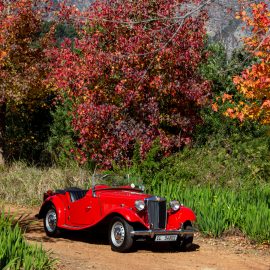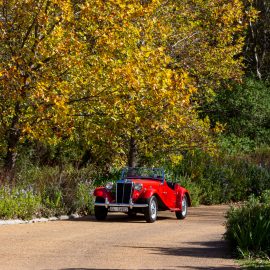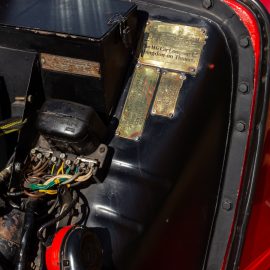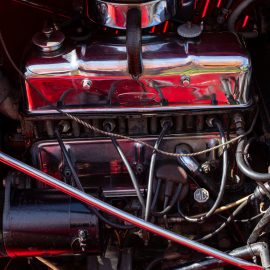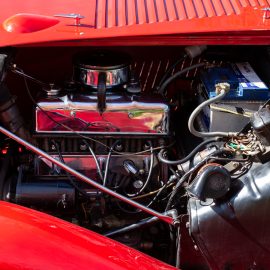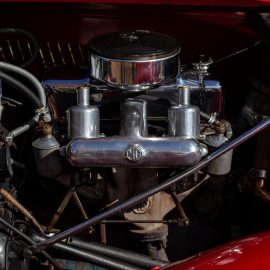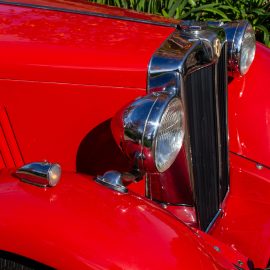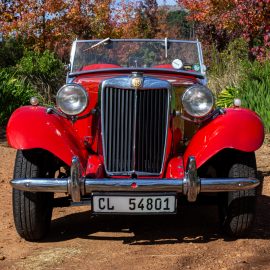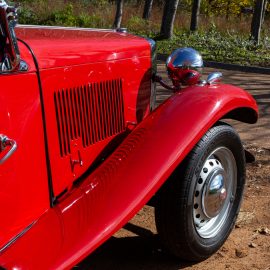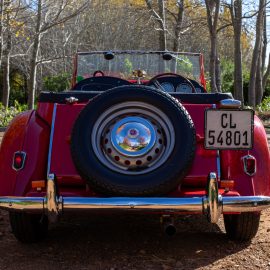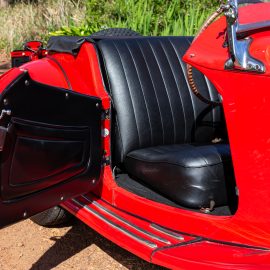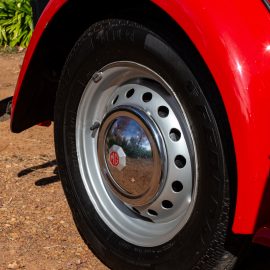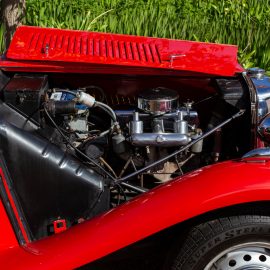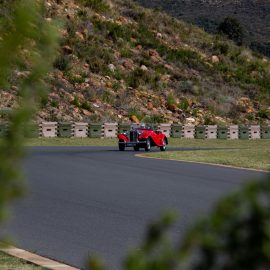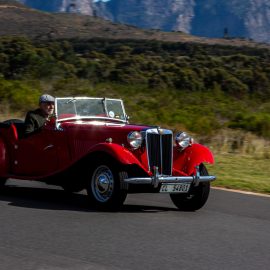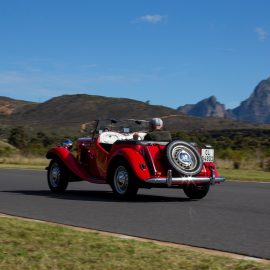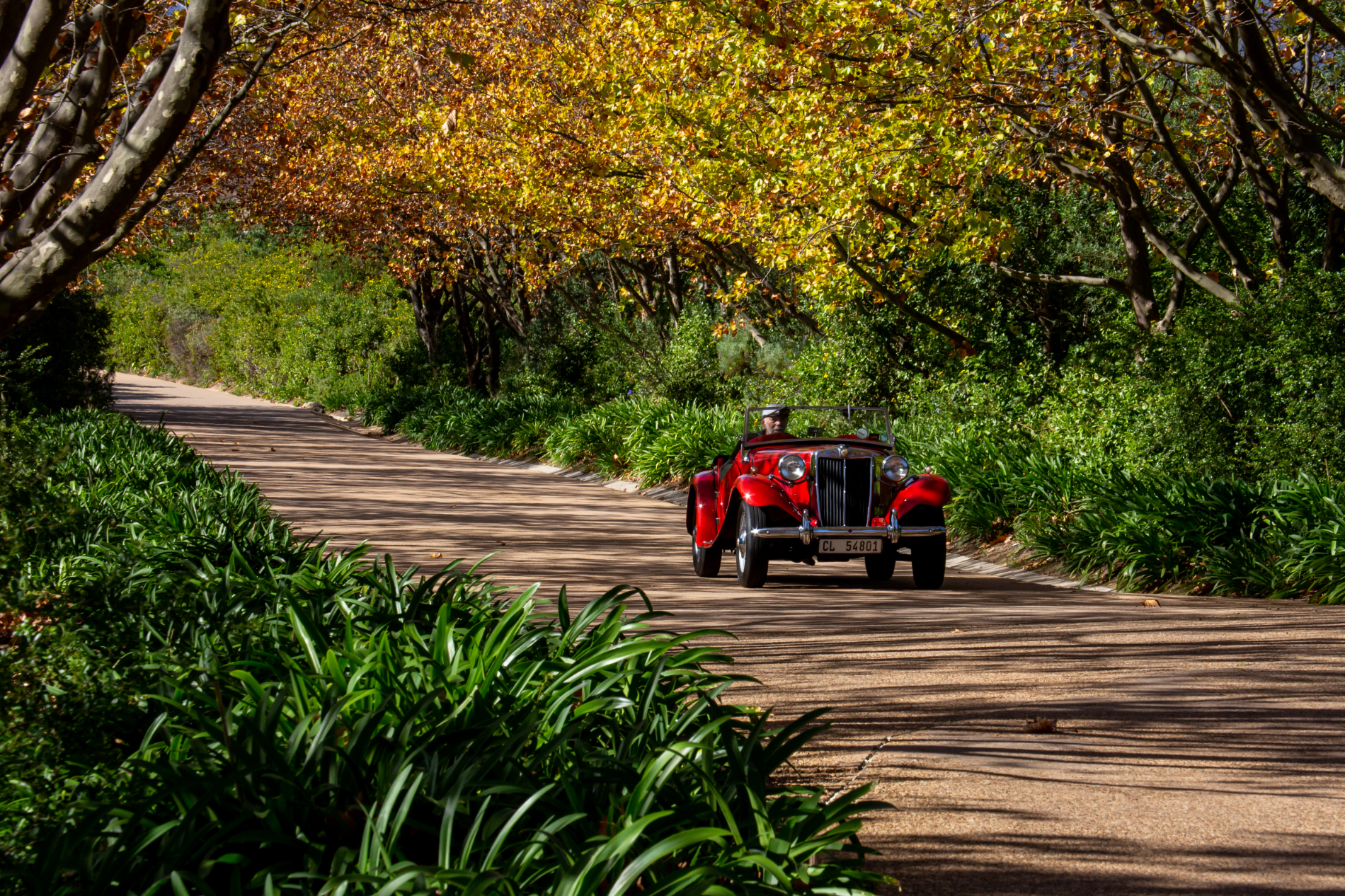
03 Jul Anniversary Celebration: MG T-Type Midget
Internationally, one of the most popular classic cars around is the MG T-Type Midget, an affordable open two-seater sports car that was manufactured from 1936 to 1955 and lasted through five generations. Mike Monk squeezes into FMM’s 70-year-old TD example…
Famously manufactured by independent manufacturer MG in Abingdon, England, the T-Type replaced the PB series and the fist of the five generations – the TA Midget – appeared with a twin-SU carburetted 1292cc overhead-valve engine (as used in the Wolseley Ten) replacing the previous model’s advanced overhead-cam motor. In May 1939, the TB Midget was introduced with a twin-SU version of the 1250cc XPAG engine from the Morris 10 Series M but the TB only lasted a year before WWII was declared. Once world peace had returned, the TC appeared in 1945 with a slightly more powerful version of the XPAG engine. This model lasted for until November 1949 and was MG’s biggest seller to date, with 10 001 units sold.
The TD Midget appeared in January 1950 and with its by-now familiar T-Type looks combined the TC’s drivetrain, the 130 mm wider MG Y-Type chassis, a modified hypoid-geared rear axle, independent front suspension using coil springs from the Y-Type saloon, and (still highly geared) rack and pinion steering. In addition, the TD featured smaller 15-inch disc-type road wheels, and standard equipment bumpers and over-riders. Spoked wheels were later available as an option but were hardly ever seen. However, at the time, the TD was regarded by enthusiasts as a disappointment, considered to be ‘mild’ and ‘not a sports car’. Ask them now what they think… But significantly, the TD was the first MG to be available in left-hand drive – the sales target was the USA – and the Americans loved it.
For the driver the “all-weather protection” was said to be good by the standards of the time. For night driving, instrument illumination was “effective but not dazzling, by a pale green lighting effect”. Strangely though, there was no fuel gauge. A green light on the facia flashed a warning when the fuel level was down to about 2,5 gallons (11,5 litres).
Slight changes were made for the 1953 model year and the model became known simply as TD II. The 1250cc pushrod-ohv engine had a compression ratio of 7,25:1 and delivered 54 hp (40,4 kW) at 5 200 r/min along with 86,8 N.m of torque at a modest 2 600. It was mated with a four-speed gearbox. An example tested by The Motor magazine in 1952 had a top speed of 77 mph (124 km/h) and could accelerate from 0–60 mph (97 km/h) in 18,2 seconds. A fuel consumption of 26,7 mpg (10,6 litres/100 km) was recorded. A TD Mk.II (note slight difference in designation) ‘competition’ model was available to special order from 1951-53 that boasted an 8,0:1 compression ratio, 60 hp (44,7 kW) at 5 500 r/min and different gearing. The Mk.II also featured twin fuel pumps and additional Andrex dampers.
FMM’s bright red TD carries car number 2401, engine number 2804 and was built by Motor Assemblies in Durban in 1953 with the build number 129. It was donated to the Heidelberg Motor Museum by the family of the late Dr Fourie of Vereeniging in February 1997, and consequently is now part of the FMM collection.
Despite a long working career almost entirely in the motor world and having driven a vast number of cars around the world, for some reason I have not driven many MGs over time. It is a marque that carries global popularity for which the T-Series cars played a significant role in establishing its strong reputation, and today have a strong international following. Consequently, I looked forward to piloting FMM’s TD and was relieved to find I could fit comfortably enough in the tight cabin.
This car is in generally good condition and it certainly lived up to expectations. It delivers a classic vintage feel, faint body shake together with a fairly stiff ride contributing to a lively ride, accompanied by a slightly rorty exhaust note but pleasingly not too much ‘wind in the face’. The gearshift works well and the unassisted steering not requiring excessive muscle power. In relative terms, it feels quicker than it really is, which was what affordable sports cars of the time excelled at.
FMM has a handful of MGs in its collection, and the TD represents one of most significant models in the company’s history, whose maxim was ‘Safety Fast’. A total of 29 664 were built, including about 1 700 Mk.II models, with all but 1 656 exported, 23 488 of them to the US alone.




